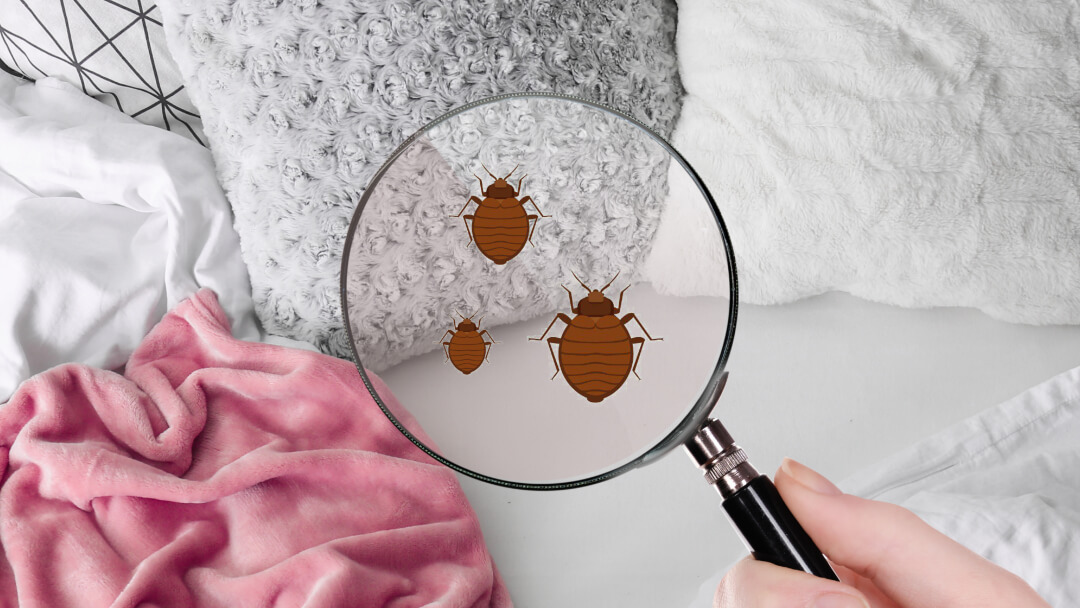Trustworthy A1 Bed Bug Treatment Houston - Proven Approaches
Trustworthy A1 Bed Bug Treatment Houston - Proven Approaches
Blog Article
Recognizing the Lifecycle of Parasites for Targeted Control Methods
Comprehending the lifecycle of insects is a fundamental facet of reliable insect management strategies. By understanding the different stages of growth that bugs undergo, an extra accurate and targeted strategy can be embraced to control their populaces. This understanding not only clarifies the vulnerabilities within the pest lifecycle yet likewise leads the way for applying tactical measures that can interrupt their growth and recreation cycles. Through a much deeper understanding of exactly how parasites thrive and advance, tailored control approaches can be created to address certain points in their lifecycle, eventually leading to even more successful bug management outcomes.
Importance of Comprehending Bug Lifecycle
Recognizing the lifecycle of pests is important for developing effective and targeted control techniques in insect administration. By understanding the different stages an insect goes through from egg to adult, pest control professionals can identify vulnerable points in the lifecycle where intervention can be most effective.
In addition, identifying the details ecological conditions required for each stage of the parasite's lifecycle can lead choices on environment alteration or exemption methods to lower and interfere with the lifecycle bug populations. This knowledge makes it possible for pest administration experts to carry out positive steps as opposed to counting entirely on reactive treatments, causing more long-term and lasting parasite control solutions. Inevitably, a detailed understanding of bug lifecycles empowers parasite control professionals to tailor their approaches efficiently, optimizing and lessening environmental influences control outcomes.
Trick Stages in Parasite Advancement
To effectively execute targeted control methods in parasite management, an essential element exists in adequately recognizing and understanding the crucial phases in parasite development. Pest development usually consists of a number of crucial phases that are critical for their lifecycle and monitoring.

Susceptabilities in Parasite Lifecycle
Throughout the various stages of an insect's lifecycle, unique vulnerabilities emerge that can be tactically targeted for efficient control steps. One vital susceptability depends on the egg stage, where insects are typically much more vulnerable to certain insecticides or biological control agents because of their soft outer shell, making them less complicated targets for treatment. In addition, the nymph or larval stage presents vulnerabilities as parasites undertake fast growth and development, needing high energy consumption that can be exploited by interrupting their food resources or introducing growth preventions. Pupal phases, characterized by stability and makeover, use a window for targeted control through physical obstacles or details therapies that impede successful appearance. Finally, adult insects, while extra resistant because of their reproductive capacity, can still be at risk during breeding or egg-laying tasks, which can be interrupted with pheromone traps or sanitation techniques. Comprehending these vulnerabilities in the bug lifecycle is important for creating effective and precise control methods that effectively take care of pest populaces while decreasing environmental influence.
Executing Targeted Control Steps

Carrying out targeted control actions usually entails a multi-faceted method. This might consist of habitat adjustment to make the environment less welcoming to pests, such as eliminating standing water for mosquito control or securing access points for rodents. In addition, biological control techniques can be used, where all-natural predators or microorganisms are presented to maintain pest populations in check.
Integrated Pest Management (IPM) strategies that incorporate different control measures in a collaborated and sustainable fashion are frequently the most efficient in accomplishing long-lasting pest management objectives. By carrying out targeted control procedures based on an extensive understanding of insect lifecycles, pest populaces can be properly regulated while lessening risks to human health and the setting.
Improved Pest Monitoring Practices

Furthermore, the unification of biological control representatives, such as natural killers or microorganisms of pests, can help in reducing dependence on chemical pesticides and advertise a more well balanced community. Applying physical barriers and catches can likewise belong to improved parasite administration practices, using non-toxic and targeted solutions for parasite control. Additionally, making use of pheromones and various other semiochemicals can disrupt pest mating patterns and interaction, resulting in lowered insect populaces over time.
Verdict
In conclusion, comprehending the lifecycle of pests is important for reliable insect monitoring strategies. By determining essential stages in bug development and vulnerabilities in their lifecycle, targeted control actions can be implemented to lessen parasite populations. Improved bug monitoring practices can assist lower the reliance on broad-spectrum pesticides and advertise even more lasting and eco-friendly pest control approaches. This knowledge plays a crucial duty in keeping healthy communities and agricultural efficiency.
Understanding the lifecycle of pests is important for developing effective and targeted control techniques in insect management. By comprehending the various phases a parasite goes via from egg to grownup, parasite control specialists can recognize at risk factors in the lifecycle where treatment can be most successful. Ultimately, a comprehensive understanding of insect lifecycles empowers pest control experts to customize their methods successfully, maximizing and decreasing ecological effects control outcomes.
By applying targeted control steps based on an extensive understanding of pest lifecycles, parasite populaces can be efficiently controlled while decreasing dangers to human health and the setting.
By determining key phases in insect development and susceptabilities in their lifecycle, targeted A1 bed bug removal houston control steps can be implemented to lessen insect populaces.
Report this page